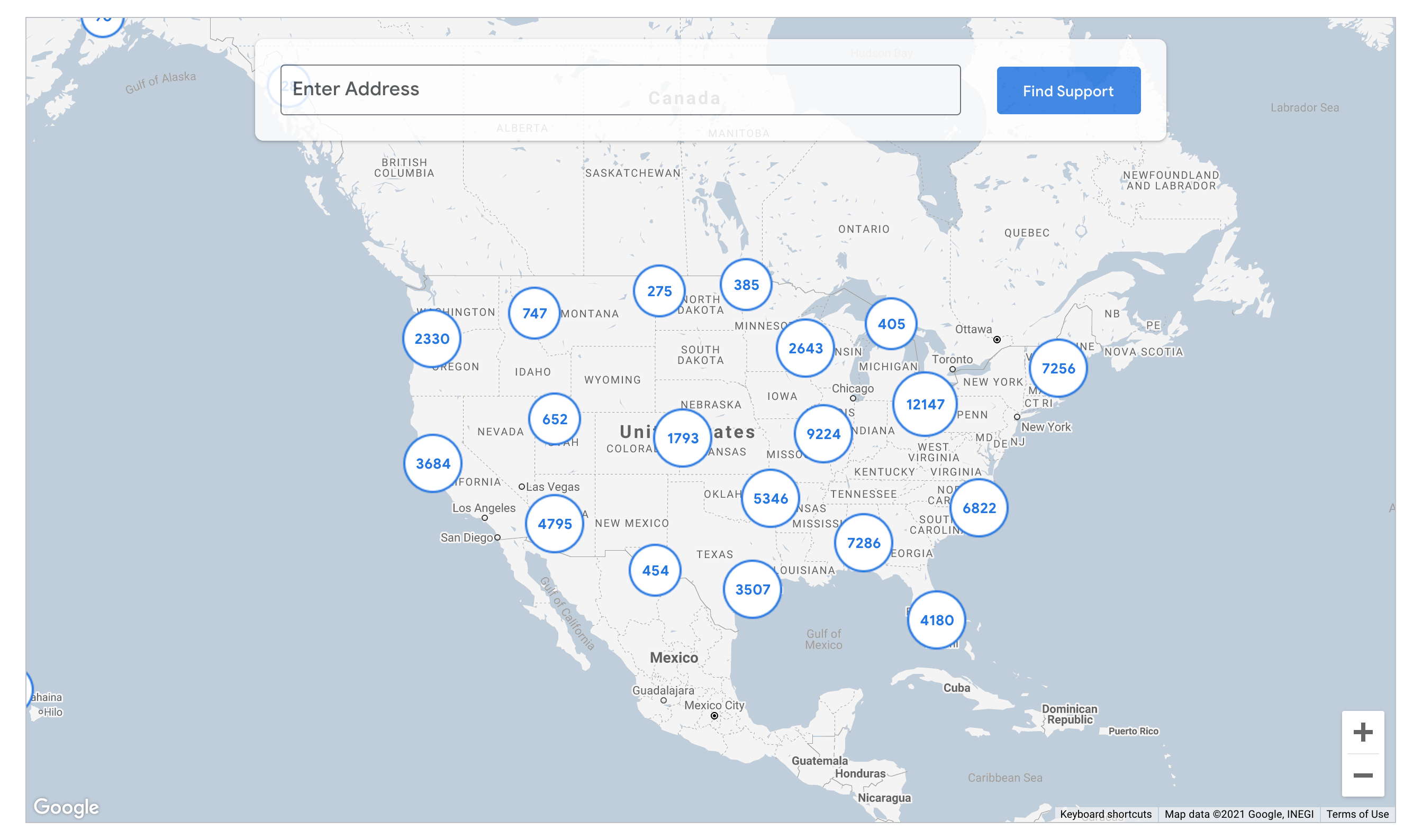For the food insecure, finding a place to access free food options locally can be a challenge. But now thanks to Google and a trio of partners, getting food assistance will hopefully be easier than ever.
The Find Food Support website (findfoodsupport.withgoogle.com) is designed to be a one-stop resource for those in need of food to quickly find and access the food services they need. At the core of the new resource is a locator tool built on Google Maps allowing users to search for the nearest food bank, food pantry or school lunch program pickup site. Using location listings and data from the USDA, No Kid Hungry and Food Finder, the tool has 90,000 listings across all 50 states.

In addition to offering location and contact information for food services across the country, Find Food Support also provides links to resources for specific groups, such as seniors and military families, as well as hotlines and state-specific resources.
The tool was built in-part as a reaction to the COVID-19 pandemic where food insecurity climbed to an estimated 45 million people and Google searches for food assistance skyrocketed. Google hopes the site can not only provide quick access to services and food people need, but also help ease the stigma of food insecurity through videos and stories of the people impacted.
“We want people to know they’re not alone,” said Emily Ma, head of Google’s Food for Good group, in a blog post. “There’s a long way to go to fully solving the hunger crisis in the U.S. and around the globe, but we hope Find Food Support helps connect people in the U.S. to free food and assistance in their time of need.”
In addition to connecting people to community food services, the tool offers educational resources and links to involvement opportunities for people to help their local communities, including volunteer or donation opportunities with groups like Feeding America, and a link to our own Food Rescue Locator to help combat food waste across the U.S.
Over time, Google hopes the database will continue to grow and be used by the people and communities who need it most — and build a hunger-free future we can all help realize.
